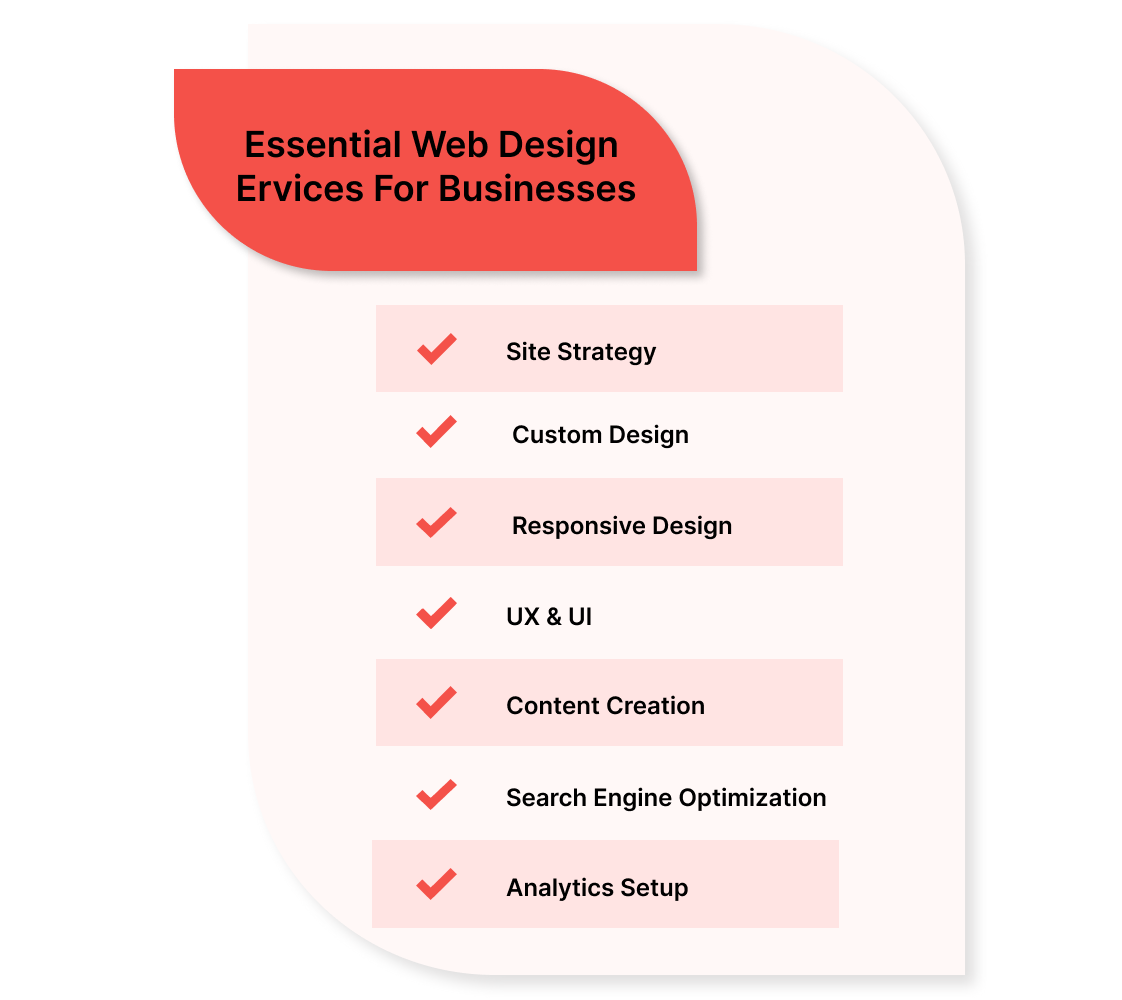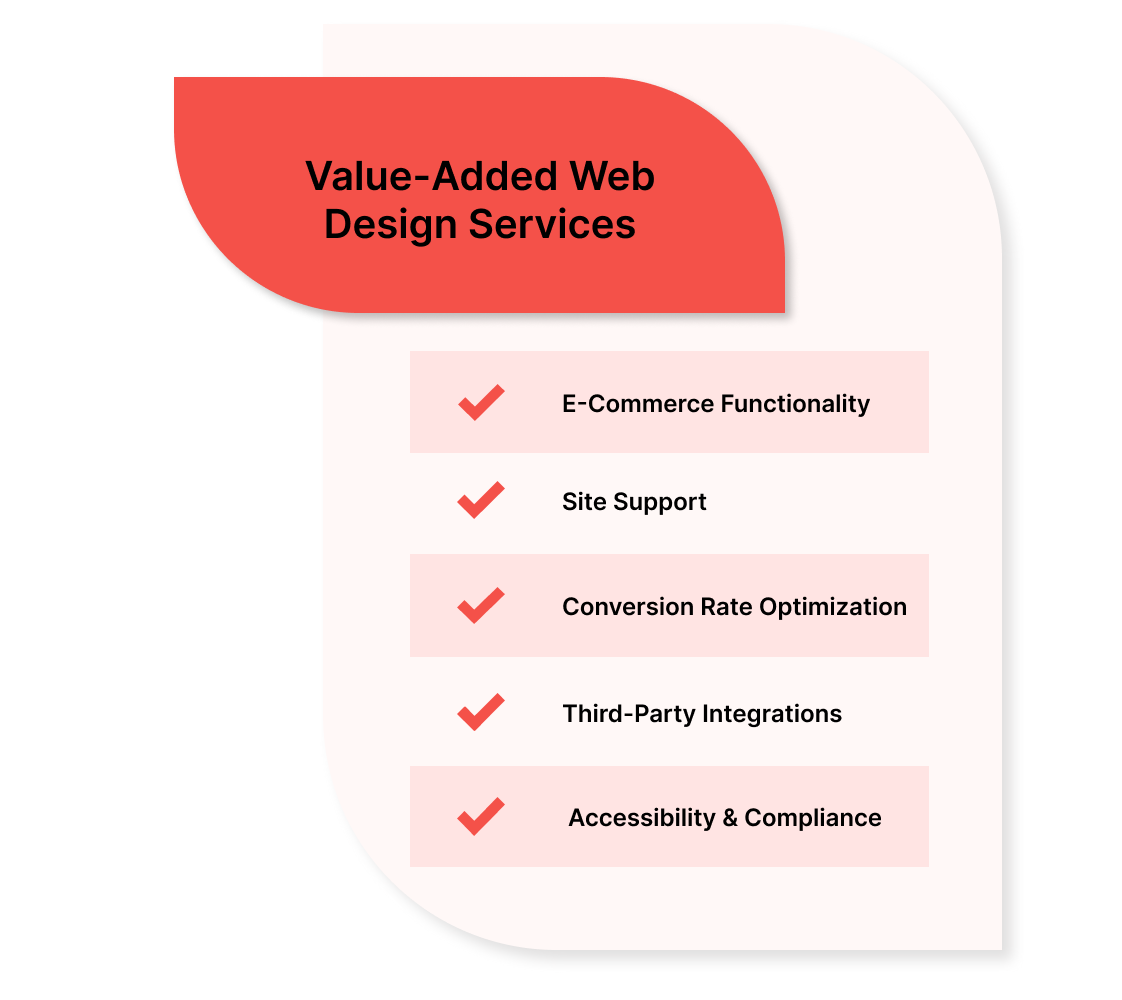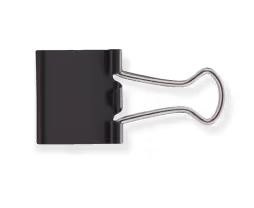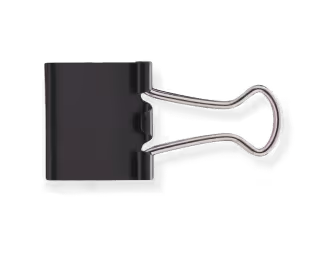Have you invested in web design before, only to find your site loads slowly, confuses visitors, or fails to stand out from competitors? Many business owners struggle to pinpoint which web design services actually move the needle and which are just fluff.
This article answers the questions you’re asking: What web design services do you really need, and how do they impact your bottom line? We’ll break down the essential and advanced services that drive real results, so you can make smarter decisions and finally get the value your business deserves from its website.
TL;DR
- A well-designed website goes beyond looks, it drives leads, conversions, and business growth.
- Core services like responsive design, UX/UI, SEO, and analytics are non-negotiable for modern sites.
- Value-added services like e-commerce, CRO, accessibility, and third-party integrations bring greater flexibility and scale.
- Choosing the right web design partner starts with clear goals, transparent communication, and strong post-launch support.
What Are Web Design Services?
Web design services encompass a broad range of professional offerings that go far beyond just making a site look attractive. At their core, these services are about creating a website that is visually appealing, easy to use, technically sound, and strategically aligned with your business goals. The right mix of services ensures your site not only attracts visitors but also converts them into leads or customers.
Why Comprehensive Web Design Services Matter
- First Impressions Count: Studies show it takes just 0.05 seconds for users to form an opinion about your website, and that first impression can influence whether they stay or leave for a competitor.
- User Experience Drives Results: Websites that are hard to navigate or slow to load frustrate visitors, leading to higher bounce rates and lost opportunities.
- SEO and Performance: Technical design choices like site structure, mobile responsiveness, and page speed directly impact your search rankings and how easily customers can find you online.
- Business Alignment: A well-designed website isn’t just a digital brochure; it’s a strategic tool for brand building, lead generation, and sales growth.
In short, web design services are the foundation for a website that doesn’t just exist, but actively supports your business objectives. In the next section, we’ll break down the core services every business should consider to ensure their website delivers real value.
Core Web Design Services Every Business Should Consider

A strong website is built on a foundation of essential services that work together to deliver a great user experience, boost your online visibility, and help your business achieve its goals. Here’s a detailed look at each core service you should expect from a professional web design provider:
1. Website Planning and Strategy
Before any design or coding begins, planning is key. This stage involves setting clear goals for your website, understanding your target audience, and mapping out the site’s structure. A good strategy covers:
- Defining what you want your website to achieve (like getting more leads or selling products).
- Researching your competitors and industry to see what works.
- Creating a sitemap that shows all your pages and how they connect.
- Deciding on key features, such as contact forms, e-commerce, or booking systems.
Proper planning helps avoid confusion, missed deadlines, and costly changes later on.
2. Custom Design
Custom design means creating a look and feel that matches your brand and appeals to your audience. This includes:
- Choosing colors, fonts, and layouts that make your site unique.
- Designing logos, banners, and other graphics to reinforce your brand.
- Making sure the design is clean and easy to navigate, so visitors can quickly find what they need.
A custom design helps your business stand out and builds trust with your visitors.
3. Responsive Design
Today, people use phones, tablets, and computers to browse the web. Responsive design ensures your website automatically adjusts to any screen size by:
- Rearranging content and menus for smaller screens.
- Making buttons and links easy to tap on mobile devices.
- Testing your site on different devices to catch any issues.
A responsive website keeps visitors happy and prevents you from losing potential customers who use mobile devices.
4. User Experience (UX) and User Interface (UI)
UX and UI are about how people interact with your website. Good UX/UI means:
- Structuring information so it’s easy to find.
- Using clear buttons, menus, and links that guide visitors.
- Reducing clutter and distractions to keep users focused.
- Making sure forms and checkout processes are simple and quick.
A positive user experience encourages visitors to stay longer and take action, like filling out a form or making a purchase.
5. Content Creation
Content is what tells your story and explains your services. This service covers:
- Write clear, helpful text for every page.
- Adding high-quality images, graphics, or videos that support your message.
- Make sure the content is organized logically and answers your visitors’ questions.
Good content helps visitors understand your business and encourages them to take the next step.
6. SEO (Search Engine Optimization)
SEO is about making your website easy to find on Google and other search engines. This includes:
- Use the right keywords in your text, headings, and image descriptions.
- Setting up page titles and meta descriptions for every page.
- Make sure your site loads quickly and works well on mobile devices.
- Creating a structure that search engines can easily read.
Strong SEO brings more visitors to your site and helps your business get noticed online.
7. Analytics Setup
Analytics tools show you how people use your website. Setting up analytics allows you to:
- Track how many people visit your site and which pages they view.
- See where your traffic comes from (like Google, social media, or referrals).
- Measure important actions, such as contact form submissions or product sales.
- Identify areas for improvement, so you can make smart updates over time.
With analytics, you can see what’s working and make data-driven decisions to grow your business.
For SaaS businesses, the basics like strategic planning, responsive design, and intuitive user experience aren’t optional. Beetle Beetle’s approach ensures every website we build is ready to engage the right audience, communicate value clearly, and support scalable growth from day one.
While these core services form the foundation of an effective website, some businesses have unique needs that require more advanced solutions. Here are some specialized and value-added web design services that can help your website stand out and perform even better.
Specialized & Value-Added Web Design Services

Not every business needs the same website features. Specialized web design services are extra options you can add to your core package, depending on your goals and industry. These services help your website do more, like selling products, connecting with other business tools, or making sure everyone can use your site.
1. E-commerce Functionality
E-commerce functionality lets your website sell products or services directly to customers. If you want to run an online store, these features are essential.
- Setting up product pages with descriptions, images, and prices
- Adding shopping carts and secure checkout systems
- Integrating payment options like credit cards or PayPal
- Managing inventory and order tracking
2. Website Maintenance & Support
Websites need regular care to stay secure and up to date. Maintenance services handle the technical side so you don’t have to worry about it.
- Updating software, plugins, and security patches
- Backing up your website to prevent data loss
- Fixing bugs and technical issues
- Providing support for questions or changes
3. Conversion Rate Optimization (CRO)
CRO is about making your website better at turning visitors into customers or leads. This service uses data and testing to improve results.
- Analyzing how visitors use your site
- Running A/B tests to compare different layouts or messages
- Making changes to increase sign-ups, sales, or other key actions
4. Third-Party Integrations
Many businesses use other tools to manage customers, send emails, or chat with visitors. Integrations connect your website to these tools for smoother workflows.
- Connecting to CRM systems for customer management
- Adding email marketing platforms for newsletters
- Installing live chat or chatbot features
- Linking to social media accounts
5. Accessibility & Compliance
Accessibility ensures everyone, including people with disabilities, can use your site. Compliance means following legal rules about privacy and usability.
- Adding alt text to images and using readable colors
- Making sure your site works with screen readers
- Meeting ADA (Americans with Disabilities Act) and GDPR (privacy) standards
6. Performance Optimization
Performance optimization keeps your website fast and reliable, which is important for both users and search rankings.
- Compressing images and files to speed up loading
- Using strong hosting and content delivery networks (CDNs)
- Regularly testing and fixing slowdowns
These specialized services help your website do more, reach more people, and keep running smoothly as your business grows.
With so many options available, choosing the right services—and the right partner—can feel overwhelming. To help you make the most of your investment, here are our top five tips for getting the best results from your web design partner.
Top 5 Tips for Getting the Most Value from Your Web Design Partner
Choosing a web design partner is a big investment, so it’s important to make the most of the relationship. Here are the five most important tips to ensure you get the best results:
1. Define Your Goals and Requirements
Before you reach out to any agency, be clear about what you want your website to achieve whether it’s generating leads, selling products, or building your brand. Knowing your goals and must-have features will help your partner deliver a site that truly fits your business needs.
2. Review Their Portfolio and Customization Capabilities
Take time to look at the agency’s previous work. Check if they can create custom designs that match your brand, rather than relying on generic templates. A strong, diverse portfolio shows they can handle projects like yours and offer solutions tailored to your business.
3. Prioritize Communication and Collaboration
Good communication is key to a successful project. Choose a partner who is responsive, transparent, and values your input throughout the process. Effective collaboration ensures your ideas are heard and the final website meets your expectations.
4. Ask About Ongoing Support and Maintenance
A reliable web design partner won’t disappear after launch. Make sure they offer post-launch support, updates, and troubleshooting to keep your site secure and running smoothly as your business grows.
5. Check Reviews and Client Testimonials
Look for feedback from past clients to gauge the agency’s reliability, quality of work, and customer service. Positive testimonials and detailed case studies are strong signs that the agency consistently delivers on its promises.
By following these tips, you’ll be better equipped to choose a web design partner who can help your business succeed online.
Ready to Transform Your B2B SAAS Website?
Are you finding that your website no longer reflects the quality of your SaaS product, isn’t bringing in enough qualified leads, or leaves visitors unsure about what you offer? These are common issues that prevent even strong SaaS businesses from reaching their growth targets.
At Beetle Beetle, we understand that having a standout product is just the starting point. Your website should clearly communicate your value, outperform competitors, and consistently deliver results that support your business goals.
Our team specializes in building B2B SaaS websites that do more than just look impressive, they become your best sales asset. We take the time to deeply understand your customers and market, refine your messaging, and design a high-performing site that’s easy for your team to manage and scale.
Why do fast-growing SaaS companies choose Beetle Beetle?
- Fast, responsive design: Your new site will look and work great on any device, with speed and SEO optimization built in.
- Proven results: Our clients have seen up to a 230% increase in conversions month-over-month.
- Seamless project management: From research to copywriting, design, and development, we handle everything.
- Ongoing support: We don’t just launch your site and disappear. We continue to work with you to drive results and growth over time.
If you’re ready to turn your website into a growth engine, let’s talk.
Schedule a call today and partner with the team trusted by over 70 SaaS businesses to drive real results for their websites.
FAQs
1. How do I know if my business needs a website redesign?
If your website looks outdated, loads slowly, isn’t mobile-friendly, or isn’t bringing in leads or sales, it’s time for a redesign. A modern website can improve your brand image and help you reach your business goals.
2. How can I get the most value from my web design partner?
To get the best results, clearly define your goals, review your partner’s portfolio, prioritize open communication, ask about ongoing support, and check client reviews. This ensures your website project stays on track and delivers real business results.
3. Why is responsive web design important?
Responsive web design ensures your website looks and works well on all devices—desktops, tablets, and smartphones. This is key for user experience, search engine rankings, and reaching more potential customers.
4. How does SEO fit into web design services?
SEO (Search Engine Optimization) is a core part of web design. It involves using keywords, optimizing site structure, and improving speed so your website can rank higher on Google and attract more organic traffic.
5. What ongoing support should I expect after my website launches?After launch, ongoing support can include software updates, security patches, backups, troubleshooting, and regular performance checks. This keeps your website secure, up to date, and running smoothly as your business grows.


.png)





























